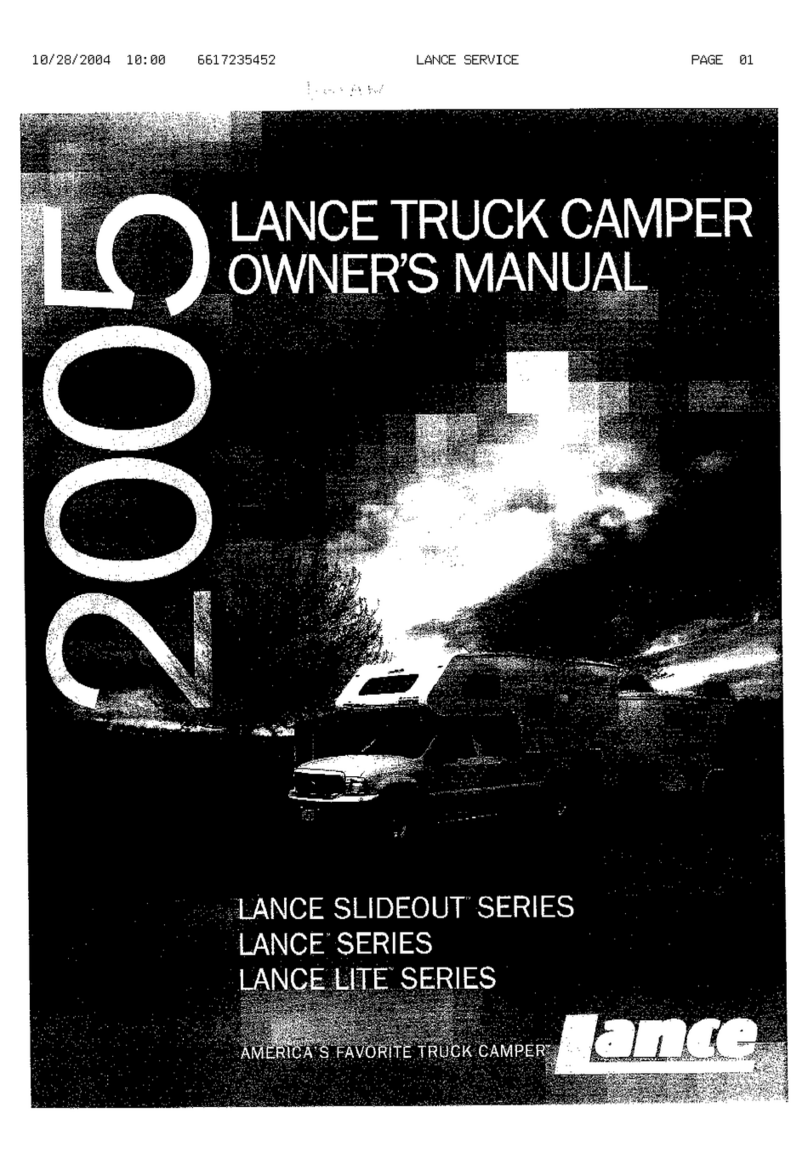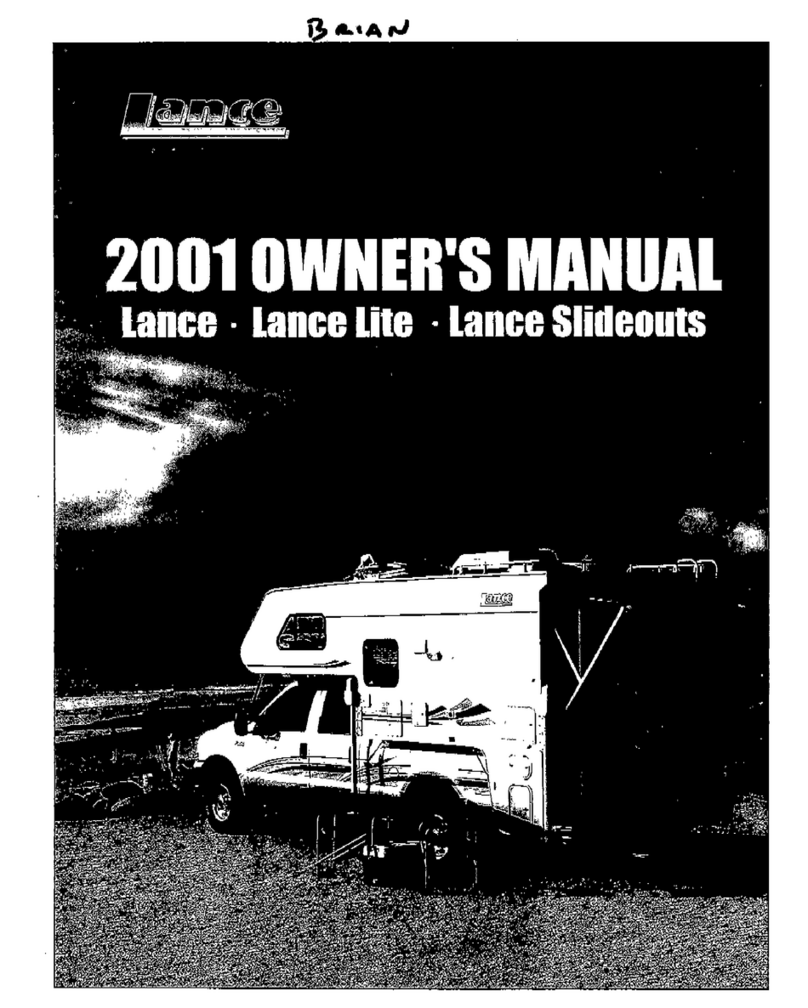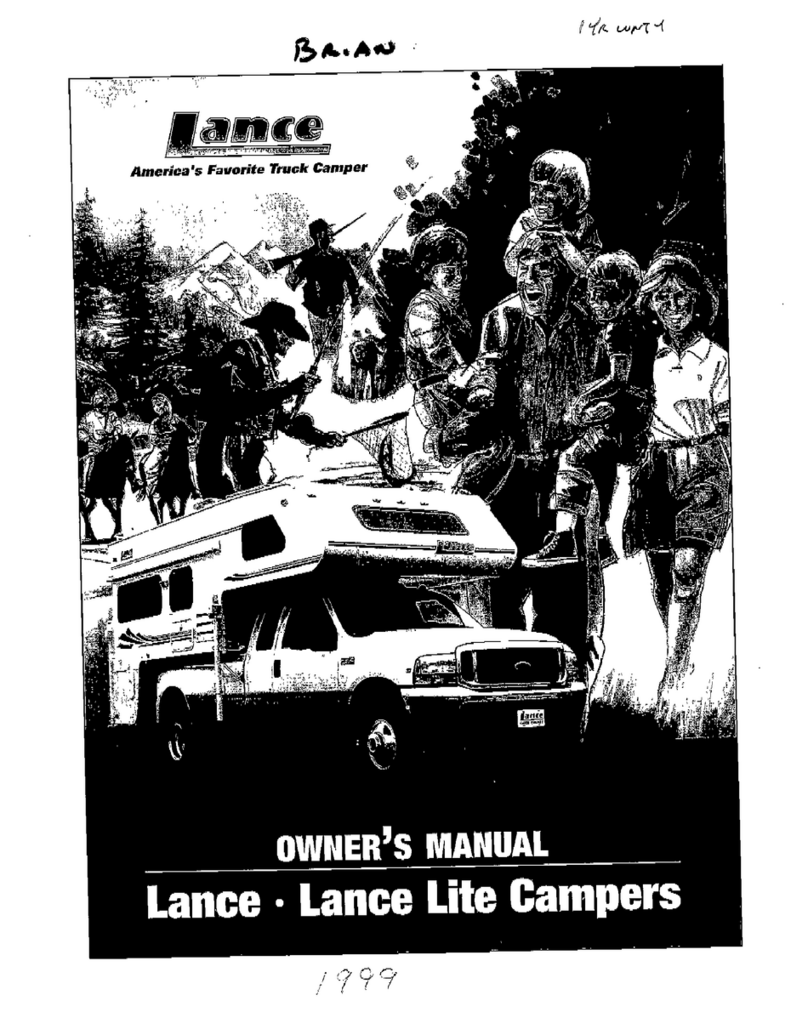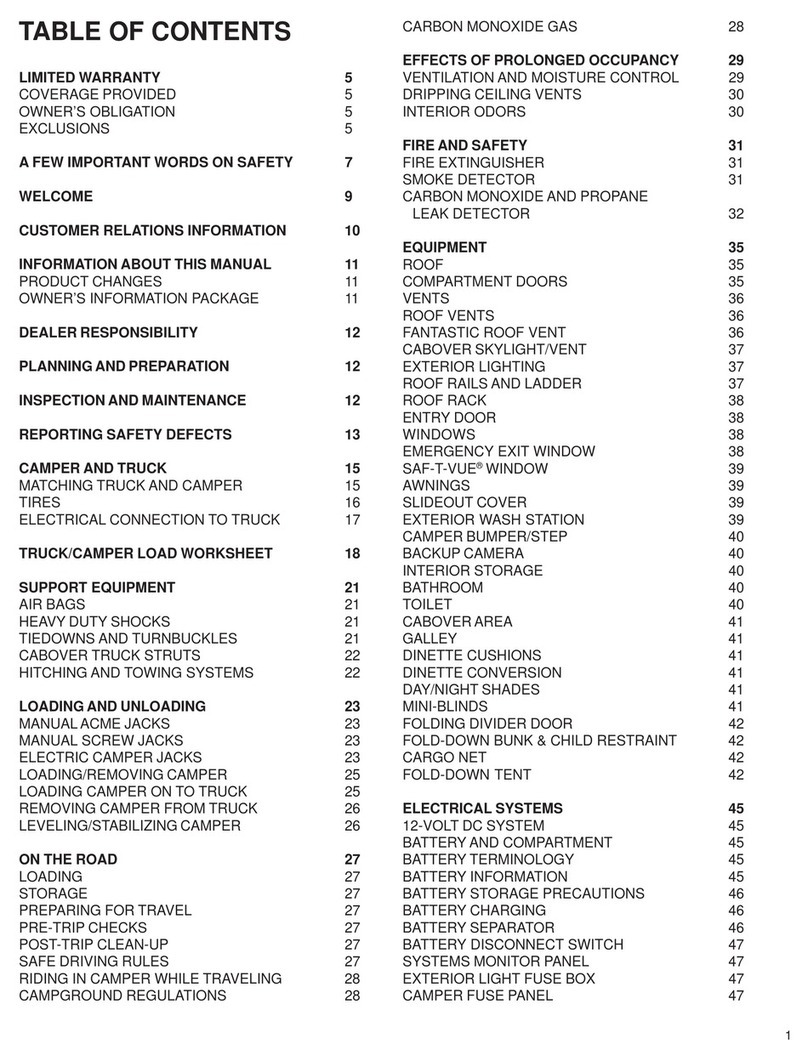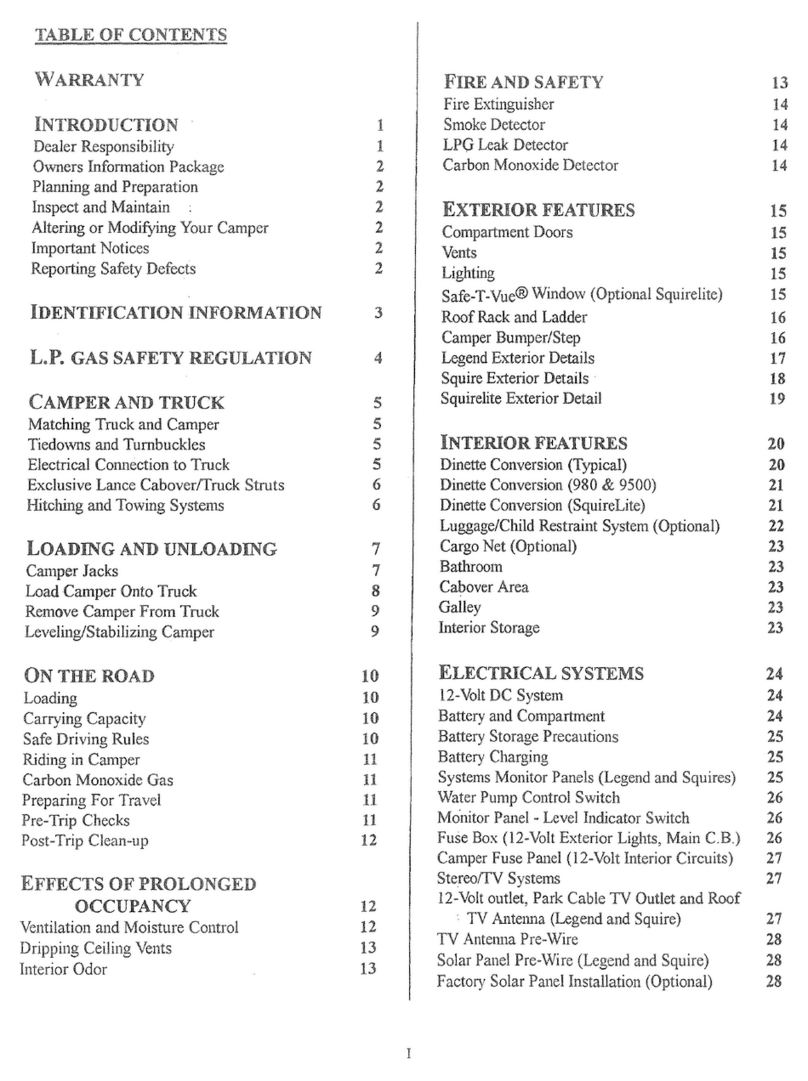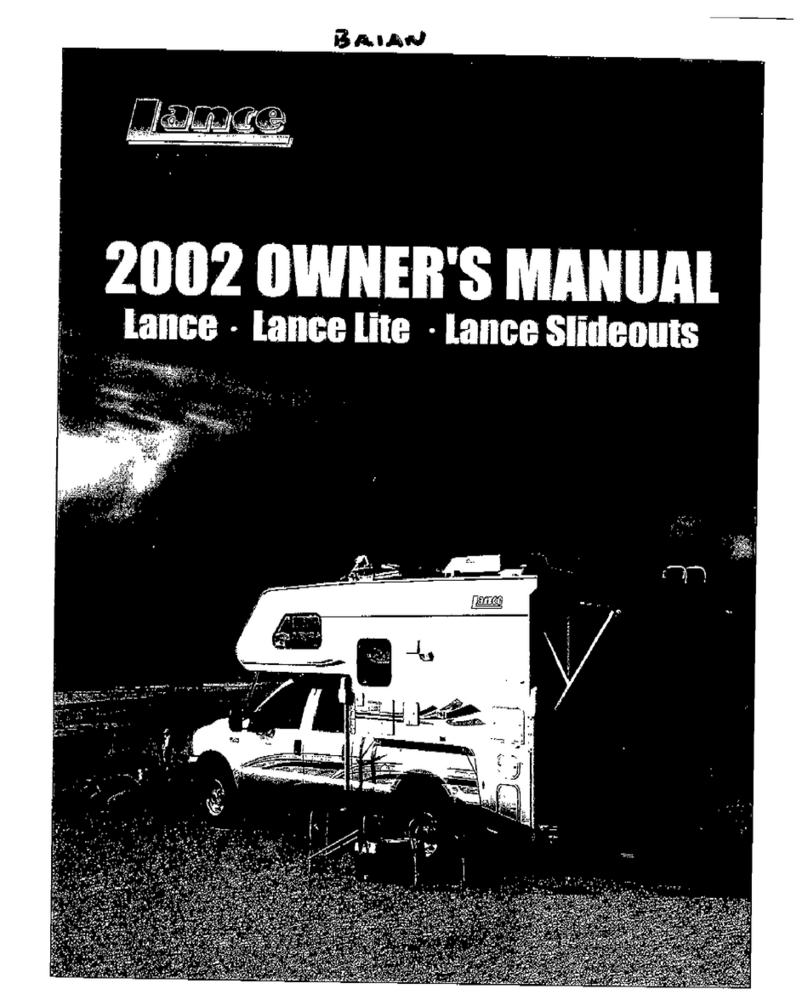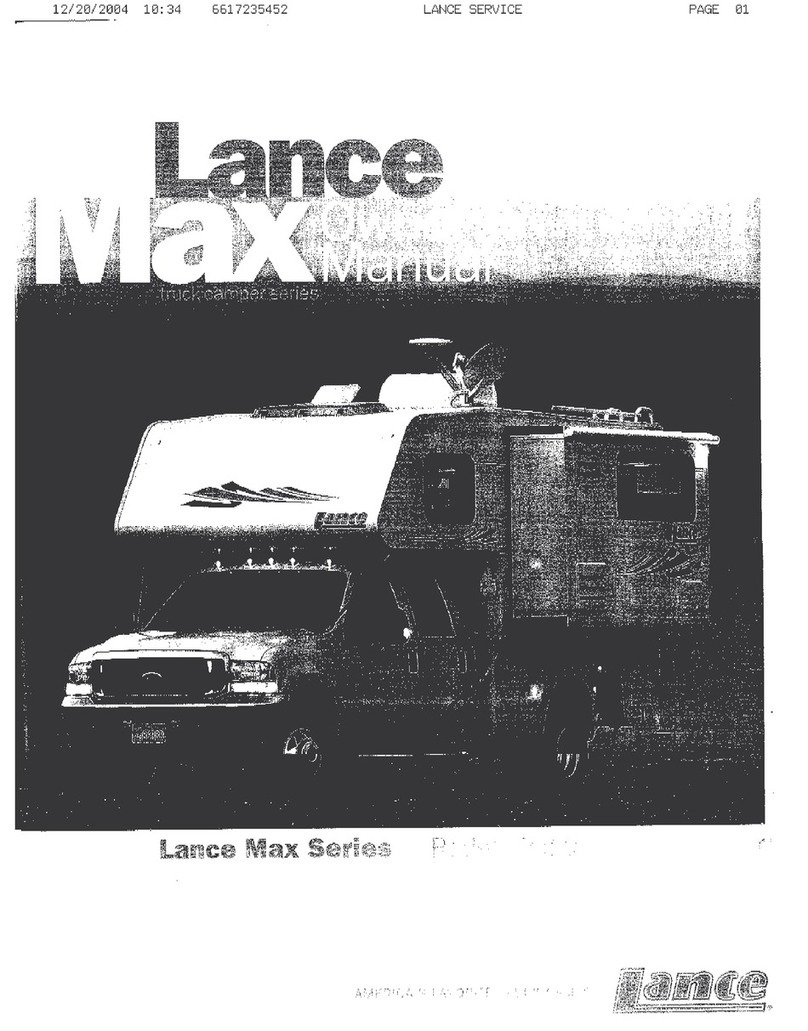
4
FUSES....................................................................... 52
INTERIOR LIGHTING ................................................ 52
SOLAR PANEL PRE-WIRE ........................................ 52
SOLAR PANEL .......................................................... 52
DOCKING LIGHTS .................................................... 53
PARK/SAT DISH INLETS........................................... 54
ROOF MOUNTED HDTV ANTENNA......................... 54
TV ANT/SAT DISH COMBO ...................................... 54
SATELLITE DISH SELF-POSITIONING..................... 54
LCD TV ...................................................................... 54
EXTERIOR SPEAKERS ............................................. 54
120-VOLT AC SYSTEM.............................................. 55
120-VOLT POWER CORD ......................................... 55
120-VOLT GENERATOR POWER.............................. 55
POWER DISTRIBUTION CENTER ............................ 56
GROUND FAULT CIRCUIT INTERRUPTER .............. 56
GENERATOR READY................................................ 56
POWER GENERATOR .............................................. 57
GENERATOR OPERATING SAFETY
PRECAUTIONS AND WARNINGS......................... 57
GENERATOR MAINTENANCE AND SERVICE......... 58
GENERATOR/ELECTRICAL COMPONENT
INCOMPATIBILITY ................................................. 58
LOADING THE GENERATOR.................................... 58
TYPICAL APPLIANCE LOADS................................... 58
POWER VS. ALTITUDE ............................................. 58
PROPANE GAS SYSTEM ....................................... 59
BTU’S ........................................................................ 59
SAFETY PRECAUTIONS........................................... 59
FILLING PROPANE TANK ......................................... 60
USING PROPANE SYSTEM ...................................... 60
SINGLE PROPANE TANKS ....................................... 60
DUAL PROPANE TANKS........................................... 60
PROPANE AT LOW TEMPERATURES...................... 61
COMBINATION CARBON MONOXIDE
AND PROPANE LEAK DETECTOR ....................... 61
EXTERIOR PROPANE CONNECTION ...................... 61
PROPANE GAS FUEL SYSTEM................................ 62
APPLIANCES .......................................................... 65
LIGHTING PROPANE APPLIANCES......................... 65
REFRIGERATOR ....................................................... 65
RANGE-OVEN ........................................................... 65
CONVECTION OR MICROWAVE OVEN................... 66
AUTOMATIC IGNITION WATER HEATER
W/120V HEATING ELEMENT ................................ 66
FORCED AIR FURNACE........................................... 66
ROOF MOUNTED AIR CONDITIONER..................... 67
COMBINATION FURNACE/AIR CONDITIONER
THERMOSTAT ....................................................... 67
FRESH WATER SYSTEM ....................................... 69
WATER PUMP ........................................................... 69
WATER TANK FILL .................................................... 69
CITY WATER CONNECTION .................................... 70
WATER SYSTEM DRAIN ........................................... 70
SANITIZING FRESH WATER SYSTEM ..................... 70
WATER FILTER.......................................................... 71
SHOWER................................................................... 71
EXTERIOR WASH STATION ..................................... 71
WASTE SYSTEM ..................................................... 73
INSULATED AND HEATED WASTE HOLDING
TANK COVER ........................................................ 73
FRESH WATER FLUSH TOILET................................ 73
BLACK WATER HOLDING TANK .............................. 73
DUMPING THE HOLDING TANKS............................ 73
HOLDING TANK CARE/MAINTENANCE .................. 74
BLACK TANK FLUSH ................................................ 74
SLIDE-OUT ROOM SYSTEM (Rack and Pinion) ..... 75
SYSTEM OPERATION............................................... 75
NORMAL OPERATION.............................................. 75
MANUAL OVERRIDE OPERATION ........................... 76
ELECTRICAL SYSTEM MAINTENANCE................... 76
MECHANICAL MAINTENANCE ................................ 76
SYSTEM TROUBLESHOOTING ............................... 76
ELECTRICAL TROUBLESHOOTING ........................ 76
SLIDE-OUT ROOM SYSTEM (In Wall) .................. 77
SYSTEM OPERATION............................................... 77
NORMAL OPERATION.............................................. 77
MANUAL OVERRIDE OPERATION ........................... 77
ELECTRICAL SYSTEM MAINTENANCE................... 78
MECHANICAL MAINTENANCE ................................ 78
SYSTEM TROUBLESHOOTING ............................... 78
ELECTRICAL TROUBLESHOOTING ........................ 78
GENERAL MAINTENANCE .................................... 79
EXTERIOR MAINTENANCE ...................................... 79
EXTERIOR GRAPHICS.............................................. 79
DAMAGE CHECKS ................................................... 80
SEALANT RENEWAL ................................................ 80
DOORS AND WINDOWS .......................................... 80
ACRYLIC WINDOWS/HEKI SKYLIGHT VENT........... 80
JACK BRACKETS...................................................... 81
CAMPER JACKS ....................................................... 81
TURNBUCKLES ........................................................ 81
AIR CONDITIONER ................................................... 81
OVERHEAD VENTS .................................................. 81
SKYLIGHTS ............................................................... 81
EXTERIOR LIGHTS ................................................... 81
WIRING...................................................................... 81
BATTERY(S).............................................................. 81
USE AND CARE OF THE TENT................................ 82
INTERIOR MAINTENANCE ....................................... 82
INTERIOR ODOR ...................................................... 82
UPHOLSTERY AND DRAPES ................................... 83
WALL AND CEILING PANELS................................... 83
FLOORS AND CARPETING ...................................... 83
WOOD PRODUCT CARE.......................................... 83
FIBERGLASS TOP CARE.......................................... 83
LAMINATE TOP CARE .............................................. 83
POWER RANGE HOOD ............................................ 83
REFRIGERATOR ....................................................... 83
